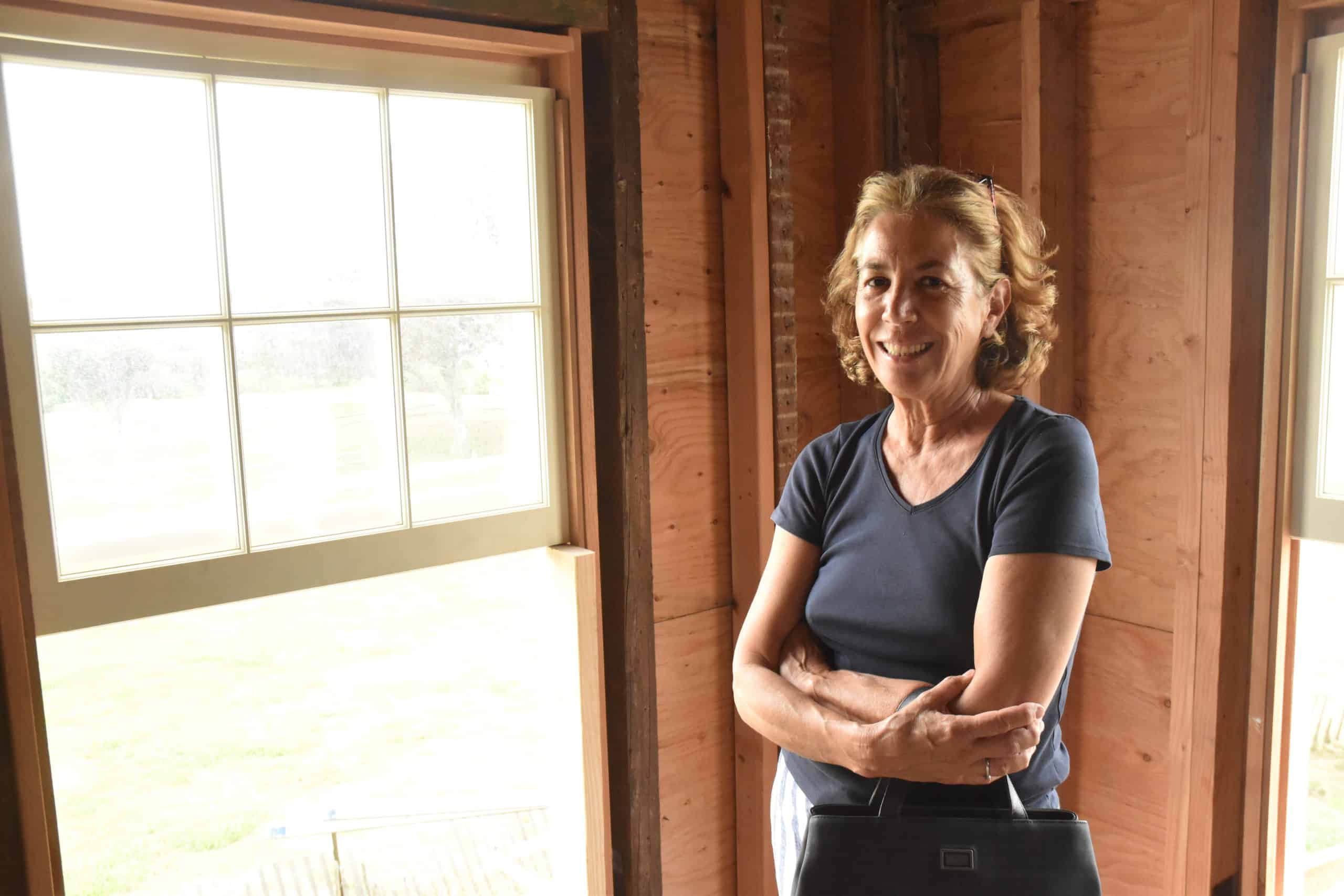A Walk Through Time with Mia Certic
A town that has been around for thousands of years is bound to be rich with history, especially in a place so embedded in the establishment of the country. Just as important are those whose efforts go to preserving this history, allowing it to live on for generations to continue to learn from and understand the significance of the past. Enter Mia Certic, Executive Director of the Montauk Historical Society, who works to keep the history of the East End alive and well for locals and tourists alike. We were fortunate enough to take a walk back in time with Mia to talk all things history of Montauk and the importance of the roots of the past.
Walk us through the day in the life of your position.
One of the best things about my job is that no two days are alike. My office is on the third floor of the Carl Fisher House with panoramic views all over Montauk and I am deeply grateful to be in that beautiful environment almost every day.

The Montauk Historical Society oversees four properties: Second House, the Montauk Indian Museum, the Carl Fisher House, and of course the Montauk Point Lighthouse. This means that I’ve got lots of balls in the air at all times, especially as summer approaches and we start to hold more events at our museums. I am involved in museum-planning, event-scheduling, historic research, fundraising, public speaking, community outreach, archiving, PR, and general administration. It’s never boring!
Have you always been in Montauk? What led you to get so involved with the town + historical society?
I have been spending summers in Montauk since I was a little girl. Back in 2019, when I heard that the Historical Society was looking for its first-ever executive director, I thought it would be a terrific opportunity to move here full-time and immerse myself in local history. I’ve always been a history buff, and have researched and written a bunch of documentaries with historical themes. So it felt like a perfect fit.
Favorite memory in/of Montauk of all time?
Hmm…tough question. My memories of Montauk go back to when I spent my first summer here at the age of seven, which was quite a few years ago! I recently gave a couple of talks about Leisuramas in my neighborhood of Culloden Shores, and I was reminded of so many happy moments from my childhood—catching snakes and turtles with my sister, swimming in the Surf Club pool, and spending every other daylight minute on the beach. Lying on the warm asphalt of the street at night and gazing up at the stars. (There was less traffic then!) The places where I had summer jobs—John’s Drive-In, the Golf Club (when it was still a club), the Blue Marlin, the Yacht Club. After I was married, my husband and I brought our kids here, too. They spent all their summers in Montauk, even when we were living on the West Coast and in Europe. So that’s a whole other set of memories! I have to say that the lighthouse has always loomed large. When I was a kid and it was still run by the Coast Guard, we would always take our house guests for a drive to the Point to see it. Later, after MHS had opened the museum, I became a huge fan of Lighthouse Weekend, which our family attended.
Why is keeping the history of Montauk alive so important? One crazy historical fact about Montauk that others might not know that amazes you?

Unlike the Hamptons, which look historic as you drive through them, past so many houses built in the 18th and 19th centuries, Montauk’s history is less obvious. I think a lot of people come here and think it just sprang up a few decades ago. But our history goes back thousands of years to our indigenous population, who had a thriving civilization, and whose story is so important—especially because they were eventually forced off this land. We have colonial history, when “proprietors” from East Hampton pastured their cattle and sheep here—that’s when First House, Second House, and Third House were built. The British Army came here during the Revolutionary War. And in the earliest days of our nation, the Lighthouse was commissioned by President George Washington and built on Turtle Hill, the very first lighthouse in New York State. There followed a series of developers and dreamers, some more benign than others, and all of whom left their marks and their buildings in this hamlet.
As for a crazy historic fact—there are so many. I like telling people that back in the 19th century, there were no roads in Montauk, and it could take six hours to get to Amagansett by horse and buggy.
Explain the historical significance of the Montauk Lighthouse.

The Montauk Point Lighthouse is a National Historic Landmark, and it’s significant for so many reasons. The obvious one is the role it played in the early maritime history of the United States, when it was hugely helpful in protecting our transatlantic trade. It remains an active aid to navigation to this day, and it’s one of the best-known and best-loved landmarks on Long Island. But because of its position atop Turtle Hill, it has always been vulnerable to storms and erosion. In fact, when Ezra L’Hommedieu, the original surveyor of the property, chose the spot where the lighthouse should be built, he warned of that threat back in the 1790s! Efforts have been made over the years to protect the lighthouse, which now stands almost 200 feet closer to the edge than it did when it was first constructed. Probably the best-known conservation efforts were those of Giorgina Reid, a diminutive textile designer from Trieste, Italy, who developed and patented her own method to protect the bluffs, using a combination of boards and reed plantings. Giorgina’s work so inspired the community that soon dozens of volunteers were joining her to help her stabilize the cliffside. One of those volunteers was Greg Donohue, who continued to work on the bluffs, and who has most recently acted as our liaison with the Army Corps of Engineers on the newly completed, $38 million revetment at Montauk Point.
Your favorite historical site on the East End and why?
I can’t answer that question, it would be like asking who my favorite child is!
What is Montauk to you?
I’ve moved houses something like 18 times—Montauk has been the only constant in my life since I was seven years old. It means the world to me.
